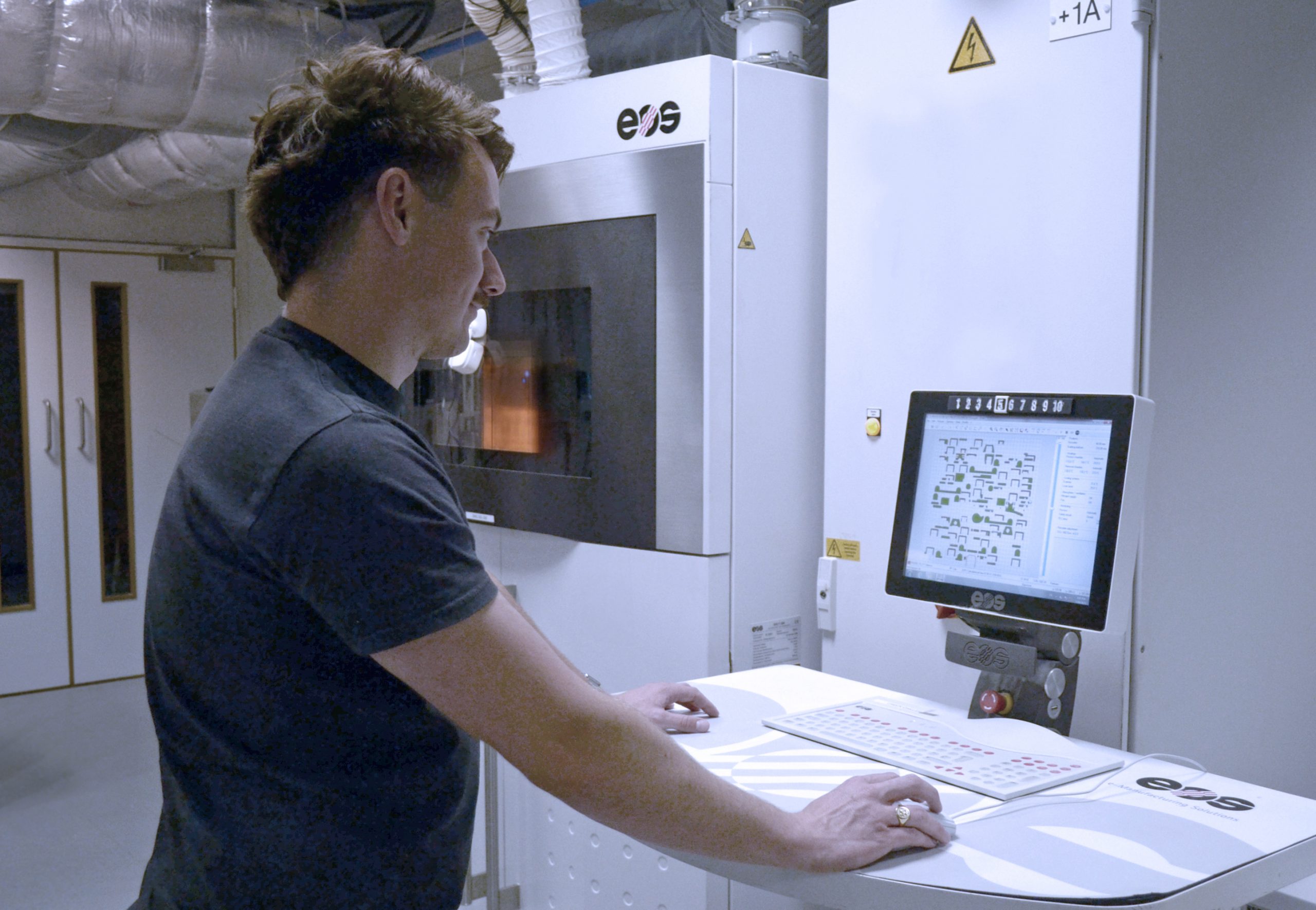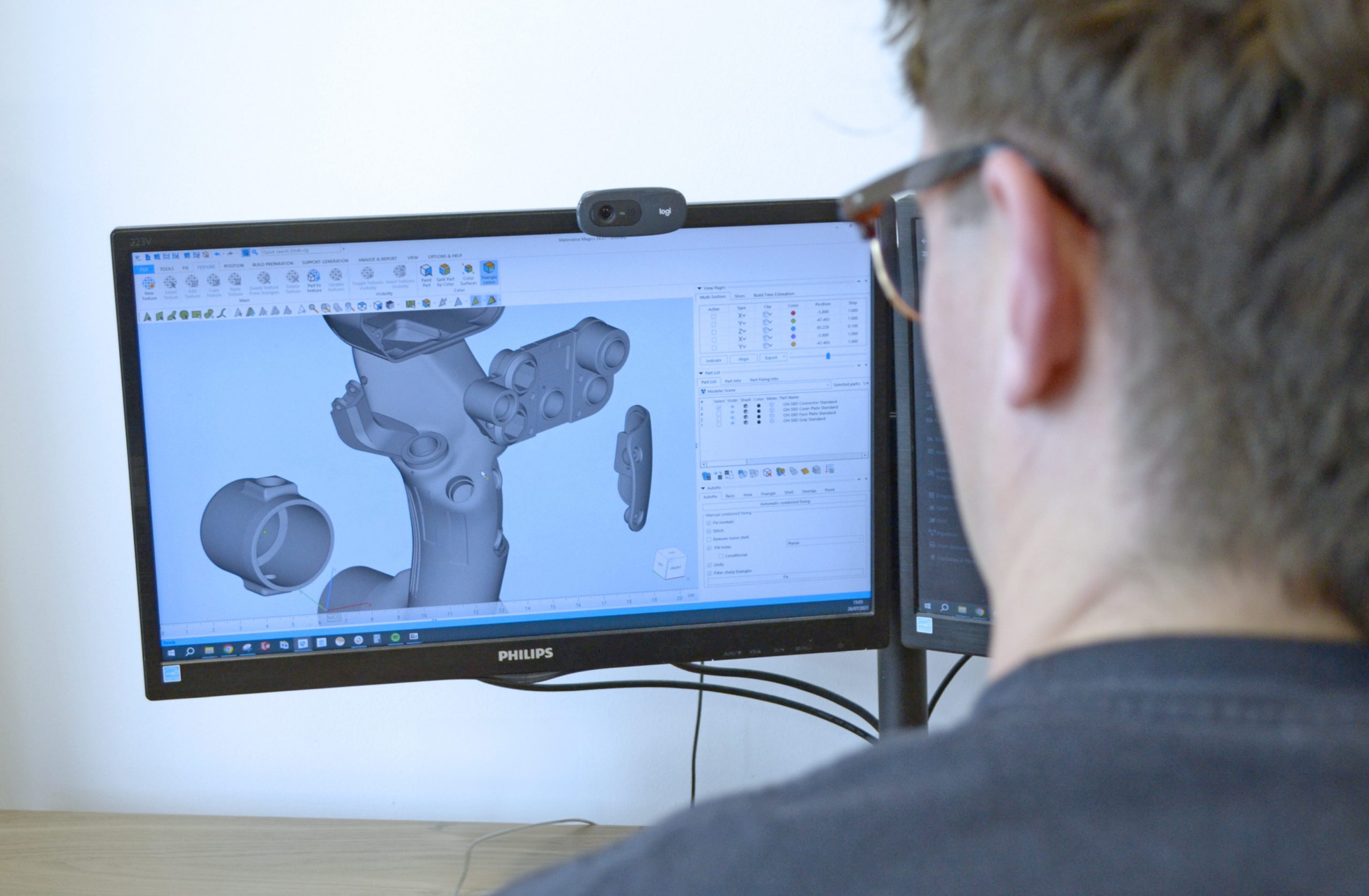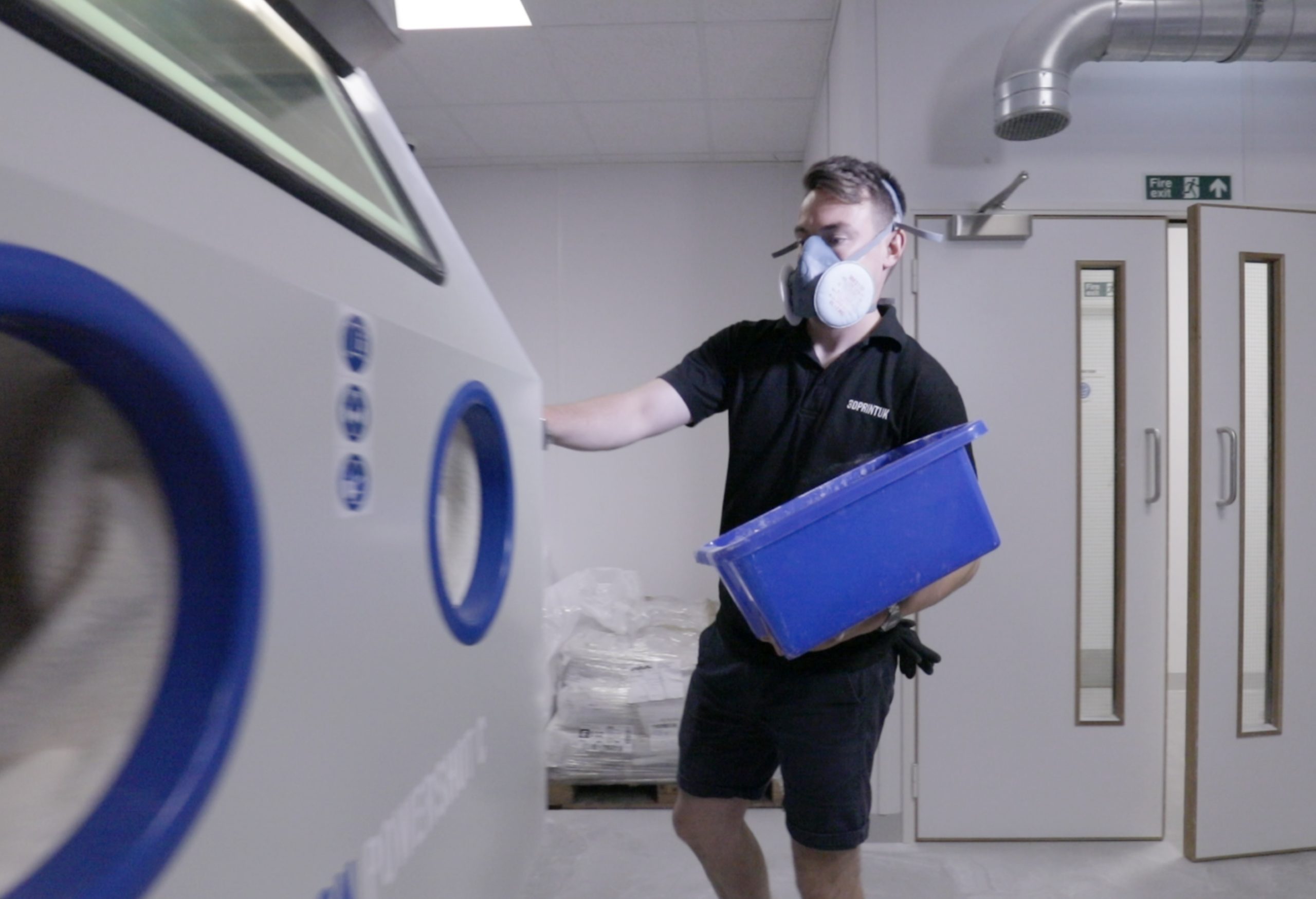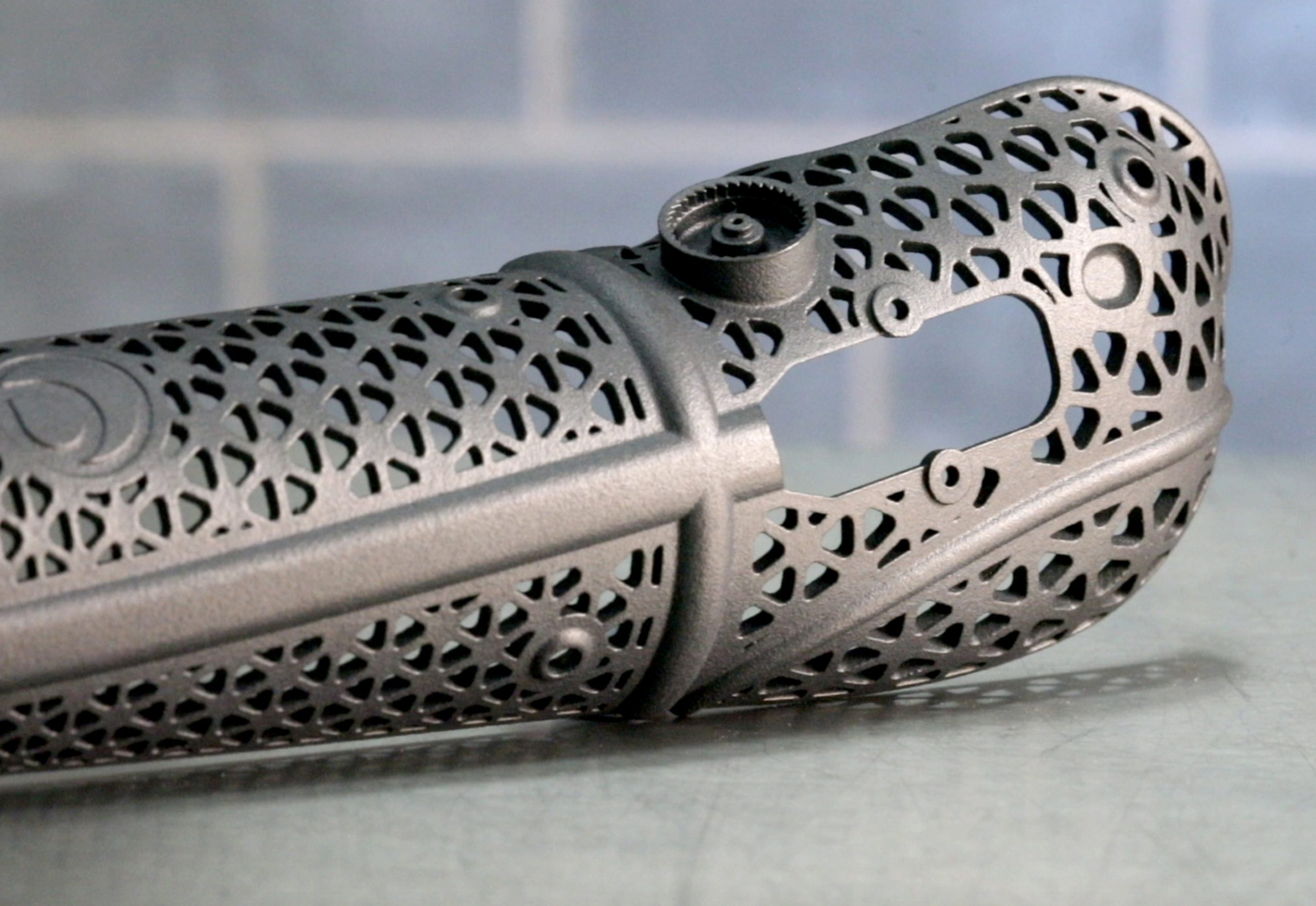We took a short time-out with Josh Wells, the Pre-production and Build Manager at 3DPRINTUK for a quick Q&A to catch up with him about the company, his role and the impact of the recent acquisition of 3DPRINTUK by Solid Solutions on the factory floor.
Q: How long have you worked at 3DPRINTUK? And, how has the company evolved, in your opinion, during that time?
Josh: I have been with 3DPRINTUK for seven and a half years. I joined after finishing university, having done a course in product design, where my favourite elements were ‘methods of manufacture’ and ‘model making’, so I jumped at the opportunity with 3DPRINTUK where I could fuse the two together. During my time at 3DPRINTUK, I have seen the company grow from seven personnel to 23, from two in-house industrial 3D printers to 18 and, consequently, two moves to increasingly large premises to accommodate the growth. The last move ensured we had room to grow further, and is in a location that allows us to extend. The growth has been amazing to witness, but one of the things that I like best about 3DPRINTUK is the culture — it is a hard-working, diverse team that gels well and actively maintains camaraderie that ensures a fun and relaxed environment to work in.

Throughout all of this growth and expansion, though, one of the key enablers for making the service more seamless is the development and introduction of the in-house workflow system. From when an order is placed through to shipment, each stage of the workflow has been optimised so it is as easy and efficient as possible.
Most recently, we have been through the acquisition by Solid Solutions. It has been a time of transition in some ways, but the fundamentals of what we do for our customers has remained the same, and I think this is because our operational procedures are so embedded in the company.
Q: What role/s do you undertake at the company? What do you like best?
Josh: My role day to day is currently going through a transitional phase as I move into a managerial role on a permanent basis. Functionally, though, I am on the frontline of ensuring that customers parts get from point of order to delivery as quickly and efficiently as possible. If I had to condense this down, then it involves checking files before they get 3D printed to ensure they are suitable for printing (both for the sake of the machine and the client); contacting said clients regarding their orders, whether it’s to update or inform of any issues; preparing builds, calibrating the 3D printers; some maintenance of the printers when necessary; measuring parts of the machine and other QA/QC checks. It means that no two days are ever the same, and I like that.

Q: What are your thoughts on the progress of 3D printing tech in the last decade – both in general and more specifically at 3DPRINTUK?
Josh: Much to my surprise, it hasn’t changed an awful lot, really. Obviously, there have been new technologies and industrial 3D printers that have been introduced to the market in the time I’ve been in the industry. However, I think that the overall quality of output has not been improved all that much, particularly when compared against other factors such as time-to-print and the cost of the machine and the materials. Personally, I would say it is an extremely competitive industry, but progress is or has been plateauing.

In terms of in-house progress, I would have to go back to how our workflow processes have been improved to be much more thorough and efficient. We have also introduced exacting quality checks and consistent calibration procedures. We have also added more machines for greatly increased capacity to meet demand, including some new technologies and materials. Altogether, these updates and additions have allowed us to produce even more professional looking parts more consistently. Repeatability is where we want to be.
Q: While 3D printing remains a valid prototyping tool, the transition to manufacturing & production on demand at higher volumes is happening as we speak – can you testify to the realities involved with this transition?
Josh: I think the beauty of 3D printing for production is that it is a tool-less manufacturing process. That is a standalone benefit, which becomes even more valuable when you consider that the design of a part in production can be amended without adding the significant costs of getting the tooling updated as well. We have seen a number of instances where a client’s first few orders will be iterations of the same part, to fine tune the design for its application with the 3D printing process. But then they will go ahead and order a large batch of the part that they have been developing, highlighting how they are using 3D printing for production. This is happening more and more often. I think what amazes me the most, though is that customers that are using the 3DPRINTUK service for batch production, will iterate between batches, but the costs remain the same. I have seen some applications where a client needs a feature added to the design or finds that there’s a flaw in the design, as much as six months after production of the first batch of parts, and it is not a big effort to make the required changes, while the costs stay the same and is only dependent on the volume of parts required. I really like how 3D printing allows for a design to evolve continuously and quite freely, and also allows customers to freely scale up their volumes as and when they need to.
Q: What is the favourite part/application you have seen or been involved with at 3DPRINTUK?
Josh: Oh! There’s been a few over the years, some more memorable than others. I can’t talk about most of them though, because as you would expect, client confidentiality is an important ethic that we adhere to. More generally, though, I love that we have been involved with a number of prosthetics projects, including the work with Open Bionics and Your Koalaa. These organisations have developed some really clever applications with real meaning behind them — for such a great cause that genuinely improves the lives of the people they work with.

Prosthetic arm by Openbionics.
I would also have to add that I have always loved telling people (really, anyone that will listen) that we make parts for the puppets in the Lion King production on the West End. It’s rarely something anyone would think about — how they’re all made — but we have contributed in some significant ways and I’m quite proud of that.
Q: What would you like to see in the next 12 months?
Josh: Well, that’s a big question! Personally, here at 3DPRINTUK, I would like to see even more capacity and for our team to continue to grow. Our new Vapor Fuse process, which is just coming on line, will expand our post processing and finish capabilities and will be an exciting addition for how we finish parts on a larger scale. All in all, it is a great place to be working and I just want to carry on.
